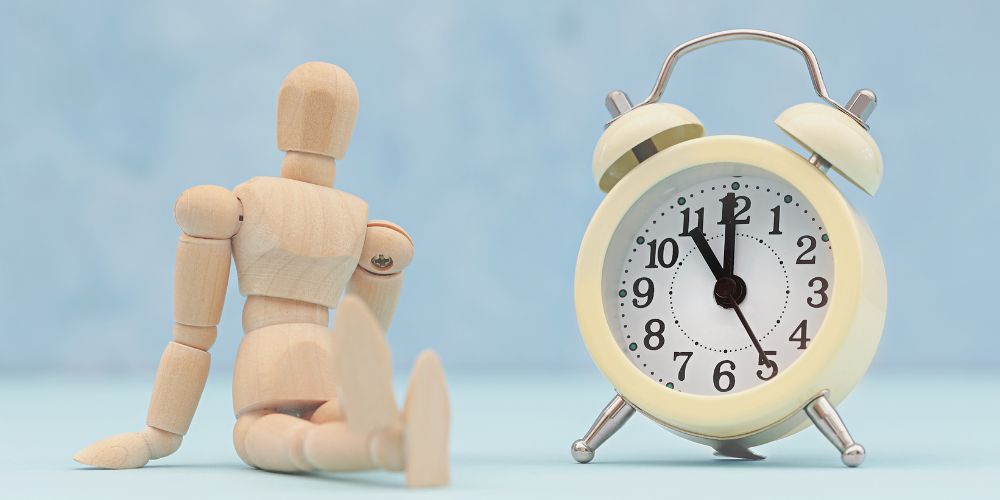أناسيفا » التعافي بعد جراحة إطالة الأطراف كم من الوقت يستغرق التحسن؟

إطالة الأطراف تقنية جراحية تُستخدم لزيادة طول العظام تدريجيًا. يُنصح بهذا الإجراء للأشخاص قصار القامة بسبب تشوهات خلقية في النمو، أو صدمات، أو تشوهات تُعيق النمو في مرحلة الطفولة. يتضمن الإجراء قطع العظم وإبعاد تدريجي للنسيج العظمي في موقع القطع، مما يُتيح إطالة مُتحكم بها للعظم الأصلي. تطورت تقنية إطالة الأطراف على مدار العقود الأخيرة، لا سيما فيما يتعلق بالتقنيات الجراحية و... رعاية إطالة الأطراف بعد الجراحة البروتوكولات. المؤشر الشائع لإطالة الأطراف هو قصر القامة، ولكن هناك مؤشرات أكثر تعقيدًا.
الطريقة المستخدمة لتطويل العظام تُسمى "تكوين العظم بالتشتيت". هناك تقنيتان عامتان مستخدمتان في: جراحة إطالة الأطراف: إطالة عظام إليزاروف التقليدية، وتقنية الإطالة داخل النخاع الأحدث. كانت الطريقة الرئيسية المستخدمة في السنوات الأخيرة هي تكوين العظم عن طريق التشتيت باستخدام مثبت خارجي. يتطلب اختيار المريض الناجح الالتزام ببروتوكولات دقيقة وصارمة في التشخيص والتقييمات قبل الجراحة. يُعدّ تحسين الوظيفة، بالإضافة إلى الاهتمام الخاص للمرضى الذين قد يتقبلون الإعاقة ولكنهم يرغبون في أن يكونوا أطول، من العوامل المحفزة للمرضى عند اختيارهم إطالة الأطراف كخيار علاجي. يُعدّ الطول والحجم من الأمور المهمة، ويجب على جراح العظام وبقية الفريق متعدد التخصصات بناء علاقة جيدة مع المريض أو والديه أو كليهما. يُعدّ علاج المريض ضروريًا لتحسين... التعافي من جراحة إطالة الأطراف.
التعافي من جراحة إطالة الأطراف يمكن أن تكون متغيرة للغاية وتعتمد على عدة عوامل. المرضى الأصغر سنًا (سواءً أطفالًا أو بالغين غير مدخنين) الذين لا يعانون من أي مشاكل صحية عامة كبيرة يميلون إلى التحسن بشكل أسرع. وقت التعافي من تمديد الأطراف، نظرًا لعملية الشفاء القوية لإطالة الأطراف في أجسامهم. يجب أيضًا مراعاة القوة الكلية لجهاز المناعة لدى المريض وملفه الصحي في وقت الجراحة. وفي الوقت نفسه، قد يواجه المريض الشاب الذي يعاني من حالات مرضية موجودة مسبقًا تحديات أثناء التعافي. يمكن أن يلعب نوع إطالة الأطراف وكمية الإطالة المطلوبة أيضًا دورًا في المدة التي سيستغرقها المرضى لتجربة الشفاء التام. بشكل عام، يمكن للمضاعفات الجراحية أن تطيل الجدول الزمني للتعافي. قد يجد المرضى الذين لا يشاركون في العلاج الطبيعي أن تعافيهم قد طال أيضًا. ومع ذلك، يمكن أن تختلف معدلات التعافي بشكل عام من مريض لآخر. وعلى الرغم من تحديد الجداول الزمنية المتوسطة للتعافي لإجراءات الإطالة المحددة، إلا أن الأطباء يحذرون من أن درجة التباين يمكن أن تمتد إلى أربعة أضعاف الاختلاف في الوقت عبر جميع طرق الإطالة.
المرضى الذين خضعوا التعافي من جراحة إطالة الأطراف يُشجَّع المرضى على الالتزام بالإرشادات الجراحية المُوَزَّعة. من المُسلَّم به على نطاق واسع أن الأفراد الذين يتبعون البروتوكولات المُوصى بها عادةً ما يستعيدون عافيتهم بعد تمديد الأطراف بشكل أسرع. تتطلب الجراحة، وخاصةً إطالة الأطراف الحادة، فترة تثبيت، حيث يُحافظ على ثبات الطرف قدر الإمكان للسماح بالمراحل الأولية من التئام العظام. الطرف شديد الحركة أثناء عملية شفاء إطالة الأطراف قد يؤدي ذلك إلى عدم التئام العظم أو بطء التئامه. يمكن أن تزيد القوى غير المتساوية المؤثرة على العظم المتجمع، بالإضافة إلى أنواع أخرى من الضغوط البيولوجية والميكانيكية، من خطر عدم التئام العظم. بمجرد شفاء العظم تمامًا، يُنصح بالترتيب لبروتوكولات إعادة تأهيل وتمارين مناسبة. أثناء عملية الإطالة، قد يتعب الطرف المصاب بسرعة؛ في المتوسط، ينخفض النشاط إلى حوالي 30% من الوظيفة الطبيعية، وهو عامل آخر قد يُسهم في زيادة مدة التعافي الهيكلي بعد إزالة الإطار. ماذا تتوقع بعد عملية تمديد الأطراف؟ الدعم النفسي والاجتماعي، والذي قد يلعب دورًا حاسمًا في التعافي. هناك صلة راسخة بين الصحة النفسية والشفاء الجسدي، ولذلك يُشجع الجراحون على تقييم الصحة النفسية للمرضى. جراحة إطالة الأطراف وقد ارتبط الاستقرار العاطفي أيضًا بتحسن حالة الجروح بعد الجراحة.
يتم تحديد مواعيد المتابعة بعد أسبوعين من الجراحة، ثم كل أربعة أسابيع بعد ذلك. يبدأ التطويل بعد أسبوع واحد من إزالة آخر إطار إذا كان متضخمًا و/أو كان فرق الطول المخطط له أو الفعلي أقل من 3 سم. يخطط الجراح، كلما أمكن، لتحقيق هدف التطويل خلال الشهر الأول بعد إزالة الإطار. من المتوقع أن يكون الألم أكثر وضوحًا بعد الاستيقاظ صباحًا، وعادةً ما يُخفف بأخذ أنفاس عميقة لتوسيع الصدر. يجب على الأمهات أو مقدمي الرعاية الآخرين الذين يتعاملون عن كثب مع مرضى التطويل تشجيعهم على اتباع خطة جيدة لتسكين الألم لتحمل هذا الانزعاج. في المنزل، تُعد نظافة موقع الجراحة ضرورية لمنع العدوى: يجب الحفاظ على نظافة الضمادات وجفافها، ويجب عدم إزالة الأشرطة اللاصقة، ويكون الطبيب أو الممرضة مسؤولاً عن تغييرها. متى يجب طلب الرعاية الطبية: ارتفاع درجة الحرارة إلى أكثر من 38 درجة مئوية، تصريف كمية كبيرة من السوائل العكرة، انفصال الجرح، زيادة الألم، أو احمرار حول الشق. يُنصح المرضى باتباع نظام غذائي غني بالبروتين والكالسيوم. يُنصح بتناول كمية كافية من الماء يوميًا، لا تقل عن 35 مل/كجم، لتلبية حاجة الجسم لزيادة تكوين العظام. يُستأنف النشاط البدني استجابةً لعودة الألم عند الوصول إلى مستويات النشاط الطبيعية. في هذه المرحلة، من المتوقع أن يكون الألم في منطقة أبعد من المنطقة المُستطيلة. يُتاح المشي في أول زيارة عائلية مُخطط لها في اتجاه مُستمر. يُنصح المرضى بالعودة إلى العيادة عند إزالة الإطار، أو بعد عام واحد من الجراحة إذا كان آخر جهاز إطالة قد أُزيل بالفعل. تُجرى الأشعة السينية للتحقق من تقدم عملية التثبيت والتأكد من عدم وجود أي ضرر في المحاذاة.
ماذا تتوقع بعد عملية تمديد الأطراف؟الهدف من علاج عدد من المضاعفات هو استعادة حالة تسمح بشفاء الجروح، واستعادة القدرة على تحمل الوزن، وإمكانية إجراء المعالجة بأمان. في بعض الحالات، قد يلزم إزالة جزء من الغرسات. تُعد علامات فرط الحساسية للمعادن من المضاعفات المحتملة المعروفة. يُنصح المرضى الذين يعانون من عيوب عظمية ما بعد الصدمة ببذل محاولات مبكرة لتحسين الشفاء باستخدام تحفيز العظام وبدائل الطعوم العظمية، حيث قد ترتبط جراحة التثبيت المؤقتة الفورية بخطر تأخر الشفاء. معلومات تثقيفية للمريض، مع التركيز على الأعراض التي تشير إلى وجود عدوى أو عملية شفاء إطالة الأطراف ويجب توفير المعلومات اللازمة حول المشاكل، فضلاً عن مبدأ إعطاء الأولوية لعلاج العدوى على علاج حالات عدم الاتحاد، قبل الجراحة.
هناك علاقة قوية بين معدلات الإطالة التي تزيد عن 1 مم يوميًا وارتفاع خطر الإصابة بعدوى موضع الدبوس. في الحالات التي تُستخدم فيها طرق الأكمام، تكون كسور القضبان شائعة جدًا إذا تم محاولة تشتيت الانتباه كثيرًا. يُعد التشتيت المدمج الذي يحد من العلامة استشارة قيّمة أثناء الموعد قبل الجراحة. تُعد كسور القضبان من المضاعفات الشائعة عند وضع وزن ثقيل جدًا على الساق. وكما تم تحديده، ستكون الحاجة إلى إطار مؤقت أقل عند جمع جميع البيانات من مريض مصاب بهشاشة العظام، حيث يكون الكالو الناتج عن الإطالة أقوى عادةً من العظم. تُعد العدوى الدموية شائعة مع زيادة بروتوكولات الإطالة اليومية. لم تُظهر الزيادة إلى 1.0 مم في الإطالة يوميًا نفس الزيادة في معدل الإصابة بالتزامن مع كثافة الكالو المصابة. يشتبه بعض مرضى الإطالة التجميلية في إصابتهم بالعدوى بسبب تغير لون الكالو. لم تُظهر فحوصات SIRS زيادة في احتمالية الإصابة.
يجب أن يكون فهم توقعات المريض وقبوله أساسًا لجراحة إعادة البناء الناجحة. يمكن للمرضى توقع حالتهم الحادة وقت التعافي من تمديد الأطراف بمتوسط 3 إلى 4 أشهر للوصول إلى كامل احتياطات تحمل الوزن قبل الدخول في فترة تقارب عام ونصف من ميكانيكا العظام والأنسجة الرخوة المُنظَّمة حديثًا بعد التدخلات الجراحية. يبدأ تكوّن النسيج العظمي الصلب خلال الأشهر القليلة الأولى بعد الجراحة، ويُشار إليه بزيادة الشفافية الشعاعية في موضع استئصال القشرة أو موضع استئصال العظم الجديد. هذه ليست سوى البداية، لذا "لا تُصدِّق شيئًا حتى ترى النسيج العظمي الصلب". تعود قوة العظام المتكونة بالكامل في غضون 15.5 شهرًا إضافيًا في المتوسط للأطفال و19.1 شهرًا للبالغين، بدءًا من وقت بدء تكوّن النسيج العظمي. يجب مراعاة تأثير الموقع والتشريح في هذه التقديرات، وهو جزء من عملية اتخاذ القرار المدروسة لكل مريض.
ينبغي أن يتوقع المرضى تحسنًا في أداء المشي مقارنةً بالسابق، بما في ذلك انخفاض نسبة عضلة الساق إلى العضلة الرباعية أثناء الجري. في حين أن آليات التحمل والتعافي، مثل العضلات الهيكلية، موصوفة في الأدبيات، إلا أن البيانات التي تتتبع التغيرات النفسية التي تحدث من سوبراماكس إلى مينيماكس خلال هذه الفترة لا تزال محدودة. قد تنجم معدلات الرضا المنخفضة بشكل مخيب للآمال أيضًا عن عدم تحقيق الأهداف الجمالية. بعد الجراحة، من المرجح إجراء مراجعة لوظيفة المفصل وحركة الركبة والكاحل، بما في ذلك تصوير الجهاز التقويمي بالأشعة السينية للتحقق من موضعه. في وقت... رعاية إطالة الأطراف بعد الجراحة بعد مراجعة الحالة لمدة تتراوح من شهرين إلى ثلاثة أشهر أو ستة أسابيع بعد إزالة الإطار، نستكشف أيضًا نواياهم المستقبلية: يتم نصح المرضى بالحفاظ على وظيفة المفصل وتشجيعهم على الاستمرار في صحتهم ولياقتهم البدنية.
هدفنا هو تحسين نوعية حياة المرضى من خلال إدارة عملية إطالة الأطراف وإطالة الحذاء بطريقة صحية وآمنة.
أطبائنا على استعداد لوضع خطة علاجية مصممة خصيصًا لتلبية احتياجاتك خلال 24 ساعة.

تواصل معنا عبر الواتساب